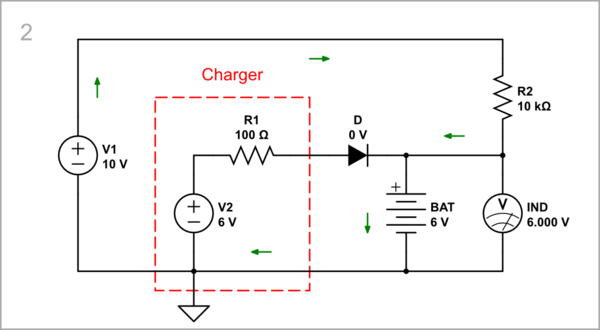The problem
... with current
It is difficult to determine the absence or presence of a battery by measuring the current because in both cases there is an open circuit. In the first case, it is a true open circuit (infinite resistance), while in the second case it is a virtual open circuit (an oppositely connected equivalent voltage source).
... with voltage
It is difficult to determine the absence or presence of a battery by measuring the voltage because the two voltage sources (the charger and the battery) are connected in parallel so in both cases there is the same voltage.
Solution
To solve the problem with voltage, we need to somehow decouple the two sources from each other. For example, we can do it by connecting a diode between the charger and the battery (with the anode to charger and the cathode to battery). Then, when the battery is removed, there will be no voltage after the diode.
To detect this high-impedance state, we can connect a pull-up resistor between it and a higher voltage source.
Operation
Charging battery
The diode is forward biased. The battery voltage is lower than the charger voltage, and it determines the indicator voltage VIND = 5 V.

simulate this circuit – Schematic created using CircuitLab
Charged battery
The voltage across the diode is zero so it is off. The battery voltage is equal to the charger voltage, and determines the indicator voltage VIND = 6 V.

simulate this circuit
No battery
The diode is backward biased. The indicator is connected through R2 to the additional V1 voltage. There is no current flowing, no voltage drop across R2, so the indicator voltage is VIND = 10 V.

simulate this circuit
More experiments
Try the circuit above without a diode; it might work depending on what is inside the charger output.
Monitor the (change in) voltage at the charger output. It should change (increase), even slightly, when the battery is removed.



